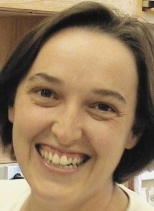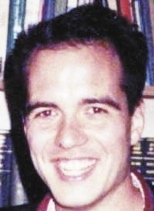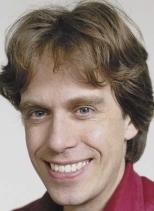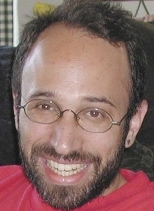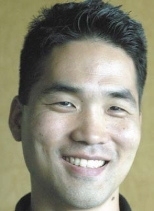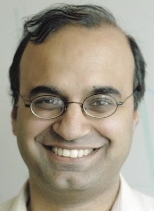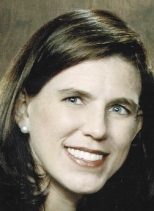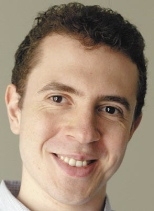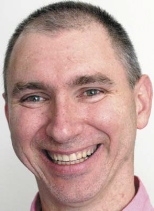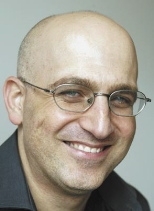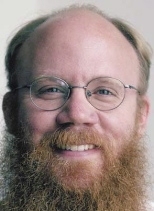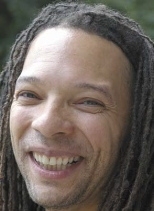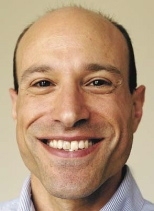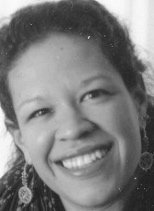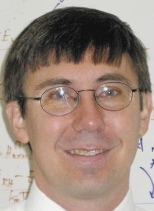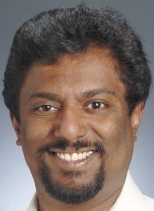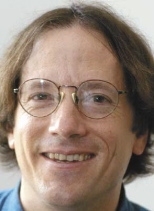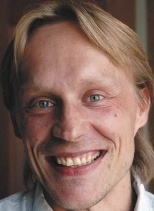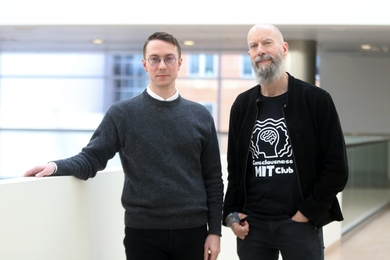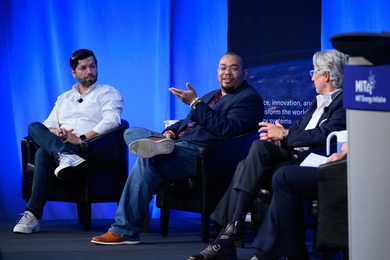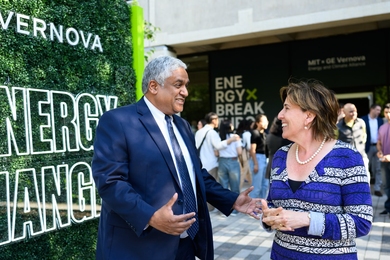School of Science
Angelika Amon
Biology
Education: B.A. 1989 and Ph.D. 1993 (both from University of Vienna, Austria).
Joined MIT faculty: 1999
A leader in the field of mitotic cell cycle regulation, Amon has discovered regulatory networks that govern and ensure the fidelity of chromosome segregation during mitosis and meiosis. Deciphering the networks that ensure accurate chromosome segregation is vital to understanding normal cell division as well as the abnormal events that lead to cancer and birth defects.
John W.M. Bush
Mathematics
Education: B.Sc. 1986 and M.Sc. 1988 (University of Toronto), Ph.D. 1993 (Harvard University).
Joined MIT faculty: 1998
Bush is a fluid dynamicist whose recent work has focused on problems in interfacial phenomena and biolocomotion. He has worked on bubble dynamics, the tears of wine, the form and stability of fluid jets and sheets, and recently, the locomotion of water-walking creatures.
Alexander van Oudenaarden
Physics
Education: M.S. 1993 (materials science), M.S. 1993 (physics), Ph.D. 1998 (all from Delft University of Technology).
Joined MIT faculty: 2000 (Promoted from assistant professor without tenure to associate professor with tenure.)
Van Oudenaarden has two main research interests within biophysics. His group focuses on the importance of noise in the expression of genes and also on understanding how small-scale biochemical interactions generate large-scale organization and cellular structure, a central problem in cell biology.
Daniel A. Spielman
Mathematics
Education: B.A. 1992 (Yale University), Ph.D. 1995 (MIT).
Joined MIT faculty: 1996
Spielman's research bridges discrete mathematics with a wide range of studies in theoretical computer science. He has been especially influential through his constructions of error-correcting codes and his introduction of smoothed analysis.
Sebastian Seung
Brain and cognitive sciences
Education: B.A. 1986 and Ph.D. 1990 (both from Harvard University).
Joined MIT faculty: 1998 (Promoted from associate professor without tenure to full professor with tenure.)
Seung is a computational neuroscientist whose research focuses on two fundamental questions about neural networks, namely: how do they use synaptic feedback loops to compute and how do they use synaptic plasticity to learn?
Deepto Chakrabarty
Physics
Education: S.B. 1988 (MIT), M.S. 1992 and Ph.D. 1996 (both from California Institute of Technology).
Joined MIT faculty: 1999 (Promoted from assistant professor without tenure to associate professor with tenure.)
Chakrabarty works in several areas of high-energy astrophysics and X-ray astronomy, in particular studying the spin and magnetic evolution of neutron stars. In 2001, he was awarded both an Alfred P. Sloan Research Fellowship and the Buechner Teaching Prize in Physics.
Sloan School of Management
Kristin Forbes
Education: B.A. 1992 (Williams College), Ph.D. 1998 (MIT).
Joined MIT faculty in 1998
Forbes is an empirical economist in the area of international economics whose research focuses on financial crises, capital controls, contagion, income distribution and economic growth.
Leonid Kogan
Education: M.Sc. 1993 (Moscow State University), Ph.D. 1995 (Cornell University), Ph.D. 1999 (MIT).
Joined MIT faculty: 2001 (Promoted from assistant professor without tenure to associate professor with tenure.)
Kogan's research interest is in the general area of asset pricing, focusing mainly in the links between observed asset prices, firms' technology and investment decisions and the preferences and beliefs of market participants.
Roberto Rigobon
Education: E.E. 1984 (Universidad Simon Bolivar, Venezuela); M.B.A. 1991 (Instituto de Estudios Superiores de Administracion), Ph.D. 1997 (MIT).
Joined MIT faculty: 1997
Rigobon is a researcher in international economics whose publications stand out in three fields: international finance, monetary economics and econometrics.
School of Humanities, Arts and Social Sciences
Daniel Fox
Linguistics and philosophy
Education: M.A. 1993 (Tel Aviv University), Ph.D. 1998 (MIT).
Joined MIT faculty: 2001
Fox's main research specialty is the interface between syntax and semantics. His publications contain important new linguistic data, and his claim that quantifier scope and pronoun binding are governed by optimization principles initiated a whole new research program in the field.
Norvin W. Richards III
Linguistics and philosophy
Education: B. A. 1993 (Cornell University), Ph.D. 1997 (MIT).
Joined MIT faculty: 1999
Richards, who is well known for his ability to learn languages, has taken over the field methods course formerly taught by Ken Hale. Richards' main research focus is on issues of movement in syntactic theory, and he has made important breakthroughs in the field. Richards has also devoted significant time to preserving endangered languages such as Lardil (Australia) and Wampanoag (New England).
Thomas F. DeFrantz
Music and theater arts
Education: B.A. 1988 (Yale University), M.A. 1989 (CCNY), Ph.D. 1997 (New York University).
Joined MIT faculty: 1997
As a dance scholar and historian, DeFrantz' areas of inquiry range from ballet to all forms of modern and popular dance. A gifted tap performer, DeFrantz uses this genre to explore the history of movement and of music. He also has challenged MIT dance students to perform at a new level of sophistication and creativity.
Edward Steinfeld
Political science
Education: B.A. 1988, M.A. 1993, Ph.D. 1996 (all from Harvard University).
Joined MIT faculty: 1996
The author of "Forging Reform in China," Steinfeld is a sinologist and comparativist whose focus is Chinese political economy. His research aims to show that to function successfully, markets depend on their institutional and cultural setting as well as on privatization and deregulation.
Helen Elaine Lee
Writing and humanistic studies
Education: B.A. 1981 (Harvard University), J.D. 1985 (Harvard Law School).
Joined MIT faculty: 1997
Lee is a highly regarded author whose general subject, the lives and families of African-Americans, has come vividly to life in two well-received novels, "The Serpent's Gift" (1994) and "Water Marked" (1999). An inspired teacher and mentor at MIT, Lee has also served as fiction editor of "Callaloo," a major literary journal, and as a volunteer writing teacher in Boston-area correctional facilities.
School of Engineering
William H. Green, Jr.
Chemical engineering
Education: B.A. 1983 (Swarthmore College), Ph.D. 1988 (University of California, Berkeley).
Joined MIT faculty: 1997
An expert in chemical kinetics, Green uses detailed chemistry, quantum mechanical calculations and advanced numerical methods to build accurate simulations. These make it possible to predict chemical kinetics even when no experimental data are available, and thus to design rationally new engines, fuels and chemical manufacturing processes.
Saman Amarasinghe
Electrical engineering and computer science
Education: B.Sc. 1988 (Cornell University), M.S. 1990 and Ph.D. 1997 (both from Stanford University). Joined MIT faculty: 1997
Amarasinghe specializes in the areas of programming languages and compilers. His chief interests are compiler optimizations, computer architectures, software engineering and parallel computing. Amarasinghe is currently working with some of his students on a solution to the Internet worm problem.
William T. Freeman
Electrical engineering and computer science
Education: B.S. and M.S. 1979 (both from Stanford University), M.S. 1981 (Cornell University), Ph.D. 1992 (MIT).
Joined MIT faculty: 2001 (as associate professor without tenure).
Freeman's current research interests include machine learning applied to computer vision and interactive applications of computer vision. His previous research topics include steerable filters and pyramids, color constancy, and computer vision for computer games. He holds 18 patents.
Tommi Jaakkola
Electrical engineering and computer science
Education: M.Sc. 1992 (Helsinki University of Technology), Ph.D. 1997 (MIT).
Joined MIT faculty: 1998
Jaakkola's primary research areas include statistical inference and estimation, machine learning and computational biology.
A version of this article appeared in MIT Tech Talk on September 29, 2004 (download PDF).
